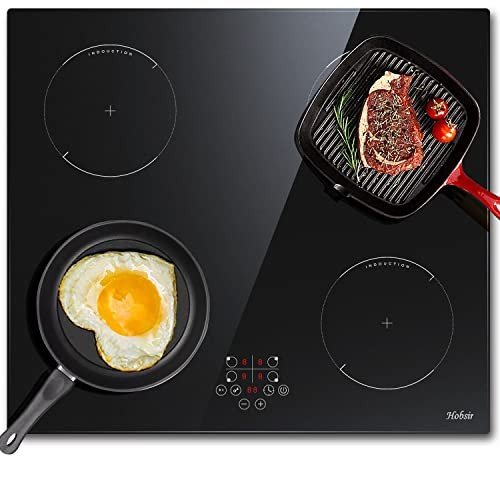Understanding Ovens and Hobs: A Comprehensive Guide
When it comes to cooking home appliances, ovens and hobs are amongst the most important tools found in modern kitchen areas. Ovens Online play essential roles in meal preparation, transforming raw components into scrumptious dishes. Comprehending the differences in between numerous kinds of ovens and hobs and how to pick the right one can make a substantial difference in cooking effectiveness and food quality.
This post checks out ovens and hobs in information, offering insights into their types, functions, advantages, and typical FAQs. Whether you are a skilled chef or a novice cook, this information will assist you make informed decisions for your cooking requirements.
Types of Ovens
Ovens can be found in a number of types, each designed for specific cooking techniques and designs. Here is an in-depth appearance at the most typical types of ovens:
| Type of Oven | Description | Best For |
|---|---|---|
| Standard Oven | Makes use of heating elements situated at the top and bottom for even cooking. | Baking, roasting, and general cooking |
| Stove | Features a fan that distributes hot air for fast and even cooking. | Baking pastries and cookies, roasting meats |
| Steam Oven | Utilizes steam to cook food, preserving moisture and nutrients. | Vegetables and fish |
| Microwave | Quickly cooks food utilizing microwave radiation. | Reheating and fast meals |
| Wall Oven | Built directly into the wall for space-saving cooking options. | Little kitchens and modern designs |
| Ability Level | Offers several cooking modes including baking, broiling, and toasting. | Flexible cooking requires |
Types of Hobs
Hobs, also referred to as cooktops, can be found in numerous types based upon their fuel source and style. Understanding these alternatives can assist in finding the best fit for your kitchen setup:
| Type of Hob | Description | Best For |
|---|---|---|
| Gas Hob | Makes use of gas flames for cooking, offering instant heat control. | Conventional cooking methods |
| Electric Hob | Uses electric coils or induction elements to heat pots and pans. | Even heat circulation |
| Induction Hob | Employs electromagnetic energy to directly heat up pots, offering quick and efficient cooking. | Energy-efficient cooking |
| Strong Plate Hob | A kind of electric hob with solid plates that takes some time to warm up however retains heat well. | Sluggish cooking |
| Ceramic Hob | Features a glass-ceramic surface area permitting simple cleaning, with electric heating components listed below. | Visual appeal |
Factors to Consider When Choosing an Oven and Hob
Selecting the right oven and hob combination requires mindful consideration of a number of elements. Below is a list of important elements to bear in mind:
Cooking Style
- Are you an everyday cook or an occasional baker?
- Do you prefer steaming or frying?
Kitchen Size
- What space is readily available in your kitchen for the appliances?
- Will you require built-in or freestanding designs?
Fuel Source
- Do you have access to gas, or would you prefer electric?
- Are you interested in induction cooking innovation?
Spending plan
- What is your spending plan for purchasing an oven and hob?
- Are you thinking about a high-end model or a more inexpensive choice?
Energy Efficiency
- Are you wanting to lower your energy intake?
- Do you prefer home appliances that feature high-efficiency scores?
Advantages of Ovens and Hobs
Both ovens and hobs bring special benefits to the kitchen. Here's a summary of some benefits:
Ovens:
- Versatility: Able to deal with a wide variety of cooking techniques from baking to roasting and broiling.
- Constant Results: Even heat circulation offers trustworthy cooking results.
- Big Capacity: Ideal for big meals and batch cooking.
Hobs:
- Control: Gas hobs offer instantaneous heat changes, helpful for exact cooking.
- Performance: Induction hobs are understood for their quicker heat-up energy and times performance.
- Independent Cooking: Multiple hobs enable cooking numerous meals simultaneously.
Selecting the right ovens and hobs is crucial for anyone seeking to boost their cooking skills and kitchen performance. By understanding the different types of each device, along with their advantages and functions, consumers can make educated choices that cater to their cooking habits and choices.
As cooking areas evolve, so do the technologies surrounding cooking devices. Buying the ideal combination of an oven and hob can cause better cooking experiences, higher food quality, and even satisfying time spent in the kitchen.
Regularly Asked Questions (FAQs)
What is the difference in between convection and conventional ovens?
- A stove utilizes a fan to flow air for even cooking, while a standard oven relies just on leading and bottom heating aspects.
How do induction hobs work?
- Induction hobs use electro-magnetic fields to directly warm pots and pans made from magnetic materials, causing quicker cooking times and more energy performance.
Are gas hobs safer than electric hobs?
- Safety depends upon use and installation. Gas hobs need appropriate ventilation and can present a fire danger, while electric hobs may present risks of burns due to their hot surface areas.
Can I bake in a steam oven?
- Yes, a steam oven can be utilized for baking, often leading to moister and fluffier baked goods, particularly breads and pastries.
What should I look for in a built-in oven?
- Search for features like capability, cooking modes, energy efficiency ratings, and ease of cleansing.
By considering the info and guides provided in this short article, readers can easily browse the world of ovens and hobs, guaranteeing that they select the very best devices to match their culinary needs.

